Gillian Knows Best guide to Vicenza & Bassano del Grappa
Where Basilicas are not churches and counts show you around their country houses

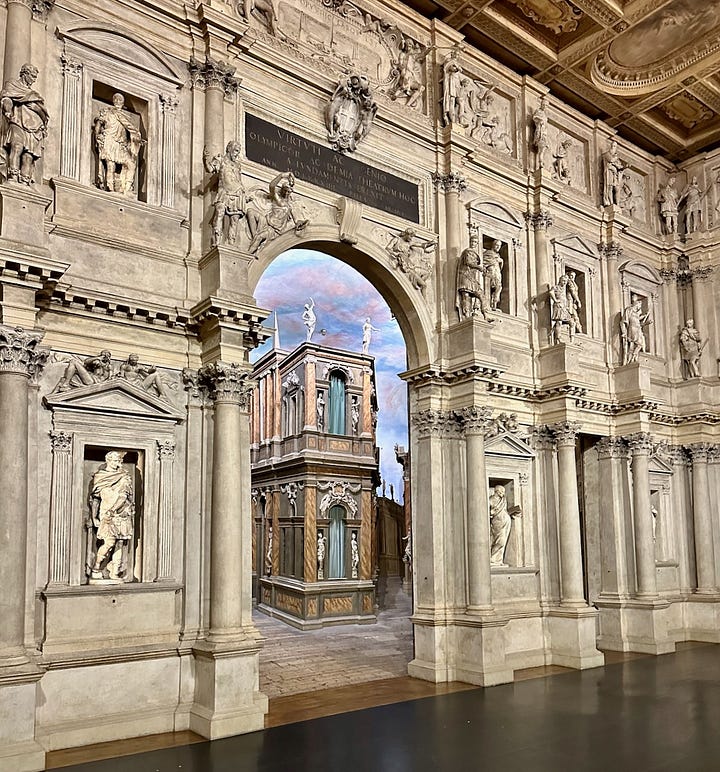
I have wanted to visit the Palladian villas in and near Vicenza for ages. My problem, whenever I was nearby in Venice, I never wanted to leave Venice. Even though I live here now it’s still not easy to get me to leave. Until last month I had only gone to terraferma for the most banal necessities like a meeting at the Notaio’s office and to get my internet hooked up. I have no excuses anymore and I am going to make a case for you to add at least a day to your Venice trip to explore a tiny part of the Veneto that is a world away from the canals and crowds.
Not sure who Palladio was? You probably know more than you think you do. The White House, inspired by Palladio. The US Capitol building, inspired by Palladio. Thomas Jefferson’s Monticello. You guessed it, same guy. His work is all about exacting proportions and symmetry, minimal decoration and columns of all sorts.
In 1570 Andrea di Pietro della Gondola aka Palladio was appointed as the official architect of the Venetian Republic. His first job was to design the facade of one of my favorite churches in Venice, San Francesco in Vigna. Other important works that you can see in Venice are the San Giorgio Maggiore church and the Roman inspired arches for the cloister behind it and Il Redentore on Giudecca.
In a radical decision, Palladio continued the all-white palette of the façade on the interior. Italians traditionally covered the insides of their churches with frescoes. Palladio, however, claimed that white’s purity would be more pleasing to God. It’s probably not a coincidence that he found patrons to approve his scheme in Venice, long known for its progressive taste and willingness to push at Rome’s ecclesiastic norms.
To dig deeper into the Palladian world all that you need to do is take the train to Vicenza. (regional trains take just over an hour or just under an hour on a Frecciarossa.) The two cities are symbiotically linked. Linked physically by the Brenta and Bacchiglione rivers and psychically. Almost everyone I met in Vicenza also had a home in Venice.
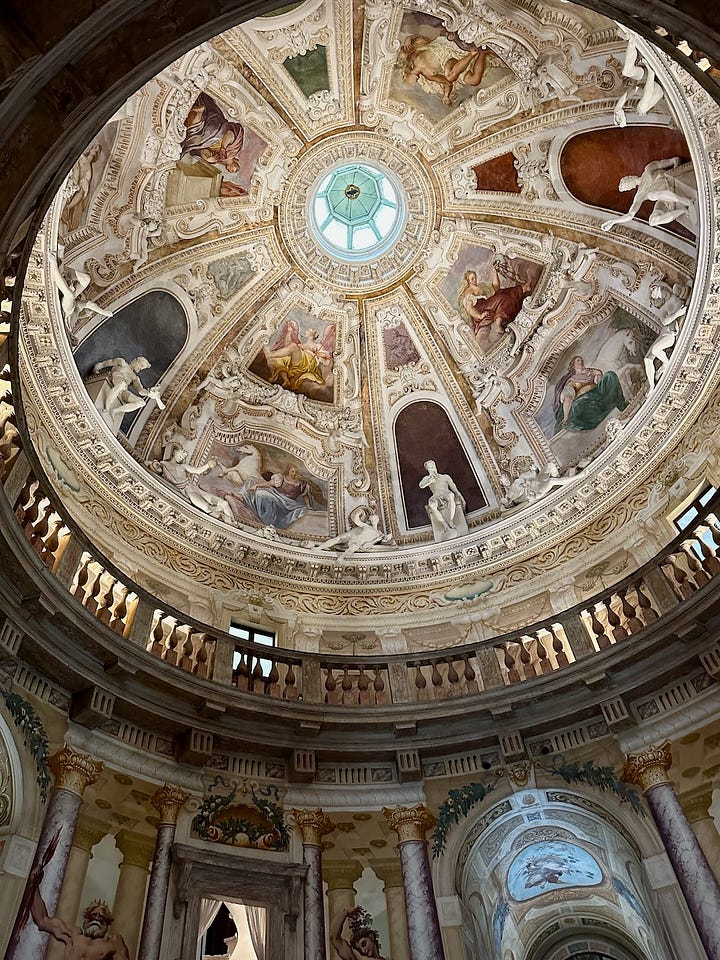
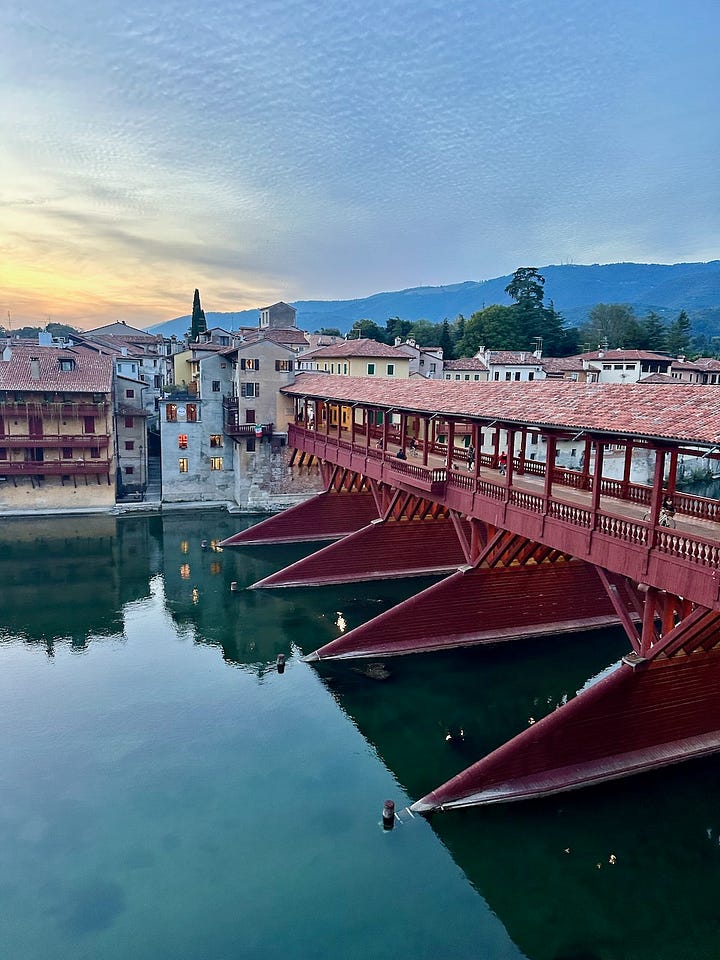
Now obviously in 24 hours you can just scratch the surface. There are 23 Palladian Villas in Vicenza and the Veneto. I made you a list of a few villas to visit, good places to eat and drink and shop, and a Palladian villa where you can spend the night. For a special experience get in touch with Elisabetta and Savio and Exploro.it.1 They have access to places that are not easy to get to or are rarely open to the public. They know the shop owners and aristocrats who tend to and promote this living history.
Palladian villas and spaces and museums to visit
Villa La Rotonda
My high school boyfriend went to the University of Virginia and lived on the Lawn where rooms famously have working fireplaces and no bathrooms. My main memory of the Rotonda is seeing it on freezing runs to pee. Thomas Jefferson never saw the original villa that he modeled his Academical Village and home after. I not only got to see it, I got to meet the count who owns it. In the middle of our tour he joined us and casually tossed me the keys asking if I wanted to take the place off his hands. Given my limited experience with Venetian real estate I tossed those keys right back to him and asked him to show me around instead. The official name is Villa Almerico Capra Valmarana that recalls the three different owners. It was built as a summer home for a sole resident, the retired Monsignor Paolo Almerico. After his death, the Capra family bought the place in 1592 and lived in it year round. Economies and fortunes changed and the villa was abandoned until Andrea Valmarana took it on a a project in 1912. His grandson now tends the estate. Our tour started with the outside of the villa its unadorned facade that is in stark contrast to the what the count described as loud frescoed space inside. Stop at the gift shop and bring back pasta and honey made from wheat and flowers grown on the estate.
Villa Godi Malinverni
You need a car to visit the Villa Godi Malinverni, the first villa that Andrea Palladio built in 1542 for Gerolamo Godi. The estate served both as an agricultural center and as a fancy place where the patrician family could entertain and impress guests. Today the Malinverni family are the owners. Italian cinefiles might recognize the villa from Luchino Visconti's film SENSO. On our visit the late afternoon light made the frescoes that decorate the rooms glow. There are two contrasting styles of frescoes here. There are the classical ones depicting Greek gods and myths painted with subdued colors by Battista del Moro and Battista Zelotti and the bolder ones of landscapes and busts of Roman Emperors by Gualtiero Padovano. His style is described as mystic on the villa’s official website. There are landscaped gardens and fountains and views and a small museum of ancient fossils. This is a popular wedding venue.
Teatro Olimpico Vicenza
Built in 1580 from a design of Palladio’s and completed by Scamozzi, the Teatro Olimpico is one of three Renaissance theaters that are still in existence (the other two are in Parma and Sabbioneta) and one of the oldest covered theaters in the world. Based on ancient Roman designs it is still used today for concerts and plays. There is a 10 minute light and music show every hour with a break for lunch.
Palladio Museum
The Palladio Museum inside the Palazzo Barbaran da Porto (designed by Palladio of course) is for the architecture lovers who really want to understand how Palladio designed his buildings. There are rooms of original drawings, scale models, and videos projected onto the wall with historians and scholars explaining his genius. Don’t miss the room with 7 frescoes by Domenico Tiepolo.
Basilica Palladiana
In most places when you hear the word basilica you think of a big church (San Pietro for example.) In Vicenza when people talk about the Basilica they are talking about the Basilica Palladina, the graceful green roofed building in the center of town. Palladio named it that because ancient Romans used that word for a large public building that served multiple functions. The building is a hodgepodge of structures that incorporate a tower whose base is from 1172, the gothic Palazzo della Ragione. Palladio’s addition of a loggia and a portico was completed in 1614. That notable green copper roof is a modern restoration because it was bombed by the Allies in WWII. In the summer you can have cocktails up on the roof and there is a jazz club and restaurant downstairs. Bar Borsa serves creative dishes like savory maritozzi and spaghetti with blue crab. They also serve brunch with eggs, pancakes and bloody Mary’s on weekends.
Ponte degli Alpini
This covered wooden bridge that crosses over the Brenta river was designed by Palladio in 1569. It has been burned and bombed and taken out in a flood. What you see today and how the bridge got its modern name is because was built by a company who had many workers that were veterans of WWII from the Alpini Corps.
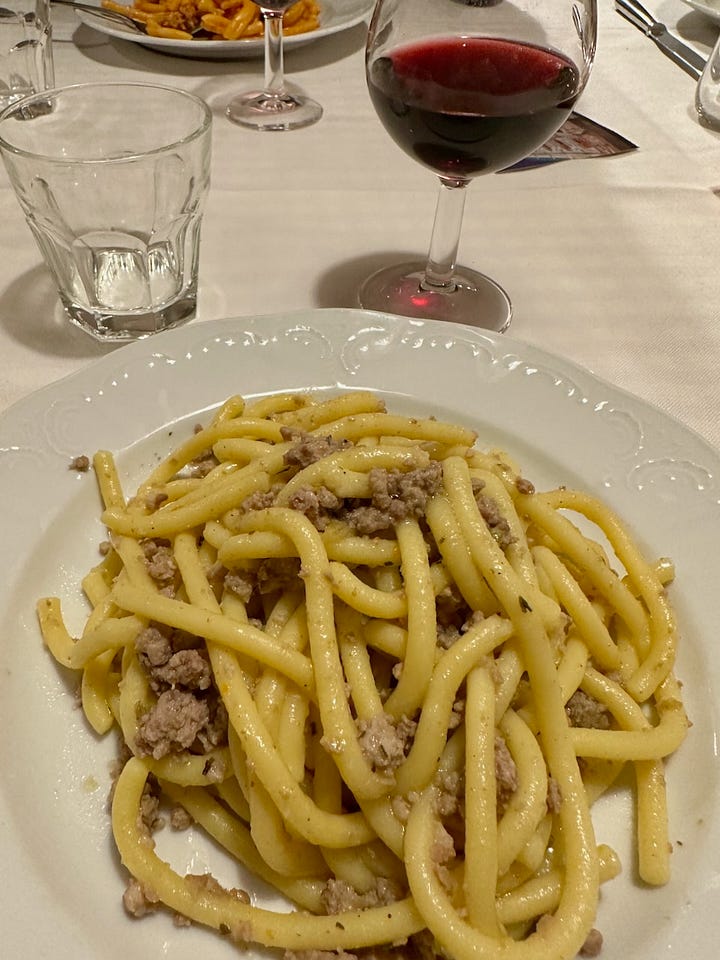

Where to eat and drink in Vicenza and Bassano del Grappa
Caffè Pigafetta
If you love the friendly family vibes at Sant’Eustachio in Rome you will love Caffè Pigafetta in Vicenza. I got a macchiatone (a double macchiato that approximates a Roman cappuccino) and a pistachio creme filled cornetto.
Nardini Grapperia
On the edge of the Palladian Ponte degli Alpini is the Nardini Grapperia. Sit inside in one of the cozy rooms that were once the first distillery in Italy and have a reinforcing Mezzoemezzo cocktail.
Antico Ristorante Cardellino
This is my kind of restaurant. Antico Ristorante Cardellino has checked tablecloths, buon ricordi plates on the walls and bigoli con ragu d’anatra on the menu. We tried to leave without dessert but were brought a plate of zaeti (a Venetian cookie make with cornmeal and raisins) and glasses of sweet Torcolato wine.
Gelateria Brustolon
The fruit flavors like pear and Clinton grape (this alpine grape has notes of foxiness!) and the Barbie pink interior of Gelateria Brustolon brightened up a cold and drizzly day. A scoop of amaretti and pumpkin is better than any pumpkin spiced beverage. The gelateria is closed from the end of October until February.
Cantina Beato Bartolomeo Breganze
Wine in Italy is complicated. We have more than 350 grape varietals and 20 wine growing regions. For comparison France has less than 200 grape varietals and 10 regions. What that means is there are a lot of exceptional wines that are not very well known. The wines from Breganze are an example. At the Cantina Beato Bartolomeo Breganze we tried a brisk spumante made from Vespaiolo grapes, an elegant merlot and a Torcolato reserve, a sweet but not cloying dessert wine made with that same vespaiola grape. It made in the same way as Sicilian passito where the grapes dried first and then fermented and aged.
Where to shop in Bassano del Grappa
El Bocon Del Prete
One of Bassano’s famous foods is white asparagus. The season for these treasures is brief but you can buy a jar of them at El Bocon Del Prete.
Carteria Tassotti
Carteria Tassotti is a paper fanatics dream. The two floors of this shop near the Ponte degli Alpini are filled with wrapping paper and prints and cards and notebooks with classic botanical designs and more modern ones like the one that really caught my font loving eye, Monotype. You can also find their products in many of the museum shops in Vicenza.
Librairie Palazzo Roberti
The Librairie Palazzo Roberti is a bookstore in a 17th century palace. Exquisitely restored by the Manfrotto family with Venetian terrazzo floors and plaster walls and Louis Poulsen lamps. The dark wood shelves are stocked with Italian and international titles. There is a terrace upstairs and a room with frescos by the Venetian painter and student of Battista Tiepolo, Giovanni Scajaro in 1779. Oh, and Napoleon Bonaparte lived here.
I didn’t have a chance to shop for ceramics, but you know that place that I love so much in Venice? Bassano del Grappo is the source.
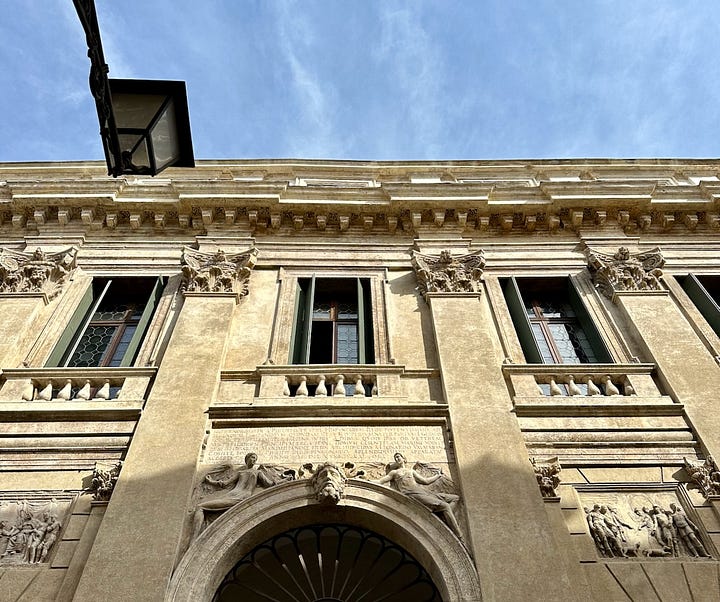
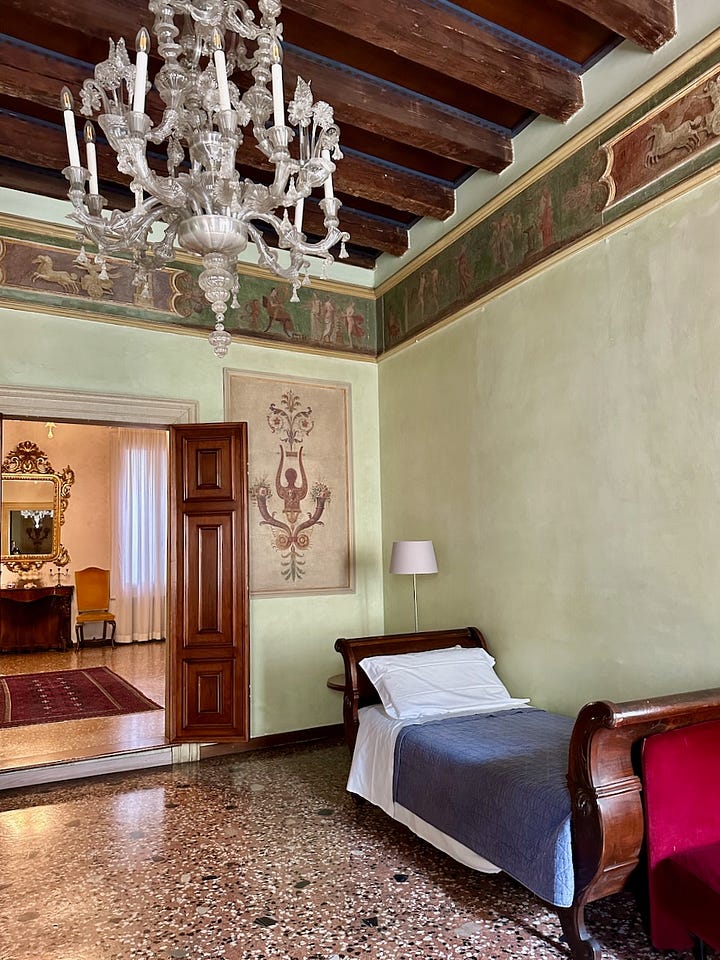
Where to sleep in Vicenza
Palazzo Valmarana Braga
If you are going to do a Palladian tour of Vicenza you really should sleep in a Palladian villa. The Palazzo Valmarana Braga is in the center of town and it has been painstakingly restored by the current generation the Valamara Braga family who live on the grounds. I slept in what was the owners father’s architectural studio, a simple room with a lovely sitting room and small kitchen. The Appartamento Palladio is perfect for a family. It has a study for The Marriage At Cana by Padovanino in the main bedroom. The original is in the Scuola Grande di San Marco in Venice.
I was hosted on this trip. I rarely say yes to invitations and I only ever tell you about places and things that a genuinely like.




I'm from Vicenza, you did a very nice tour! It is a nice feeling read about your city from a traveller point of view! Thank you!
To visit the Palladian villas is an old childhood dream of mine! Thank you for this guide. One day...